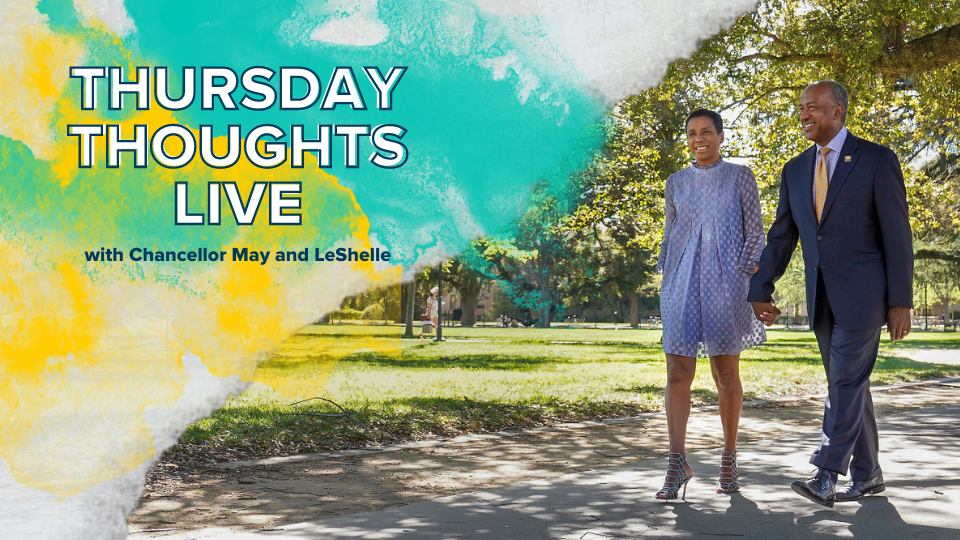Alternative or alt text is the text that is embedded into a post that briefly describes an image. This text is hidden from public interfaces but appears in a platform’s code. The text allows assistive technology to explain what is in the post for those who may not be able to see the image.
What to consider when writing alt text:
- Add to every photo, graphic or gif posted.
- Write in plain language.
- Stay neutral and fact-based.
- Keep as concise as possible.
- Focus on accuracy over detail.
- Only provide details if they are critical to understanding the image.
- When describing people, do not make assumptions about their identities.
- If someone’s identity is relevant to the image, include that information as long as you are certain of accuracy.
- Transcribe all relevant text if the post includes graphic or text overlays.
- Do not include “photo of” or “image of” before describing.
Alt text examples:

Good alt text example:
Chancellor May and his wife LeShelle walk on campus. An overlay teal and yellow watercolor graphic reads, “Thursday Thoughts Live with Chancellor May and LeShelle.
Bad alt text example:
Graphic and photo of two people walking.
Why this is accessible:
- Describes who/what is in the image, including colors, graphics, text, and actions
- Includes location and names for context
- Does not include non-essential details
Why this is inaccessible:
- Does not provide enough detail to be helpful to the user
- Does not provide enough contextual information